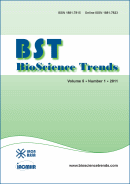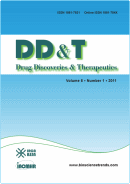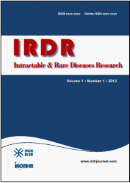BioScience Trends. 2025;19(4):456-467. (DOI: 10.5582/bst.2025.01040)
A new strategy of laparoscopic anatomical right hemihepatectomy via a hepatic parenchymal transection-first approach guided by the middle hepatic vein
You N, Li Y, Zhang Q, Wang C, Wu K, Wang Z, Ren Q, Li J, Zheng L
Laparoscopic anatomical right hemihepatectomy (LARH) is a highly challenging procedure due to the lack of an appropriate surgical approach. This study aimed to investigate the safety and efficacy of LARH via a hepatic parenchymal transection-first approach (HPF) guided by the middle hepatic vein (MHV) (HPFM) to treat hepatocellular carcinoma (HCC) by comparison with the extrahepatic Glissonian approach (EG). Between January 2017 and December 2019, a total of 105 HCC patients who underwent LARH, of whom 48 underwent HPFM, were included in this study. After a 1:1 propensity score matching, 41 LARH-HPFM were compared to 41 LARH-EG. We have analyzed perioperative and oncologic outcomes of the two different operative approaches for HCC treatments. Quality of two operative approaches was defined by textbook outcome (TO). The LARH-HPF group was associated with shorter mean operative time (P = 0.029) and less blood loss (P = 0.023). The LARH-HPFM did not increase the postoperative overall complication rates (P = 0.248) when compared with the LARH-EG. The results of univariable and multivariable analyses indicated that LARH-HPFM provided a clinical benefit for operative time and blood loss. In addition, patients who received LARH-HPFM cumulated more TO criteria (P = 0.017), and achieved higher rate of TO (46.3% vs. 24.4%; 2.68, 95% CI 1.05 - 6.86, P = 0.040) compared with those who received LARH-EG. These findings indicate LARH-HPFM is safe and feasible for HCC with certain advantages over LARH-EG, but there are still many problems worth further exploration.







